The Best Fluffy Pancakes recipe you will fall in love with. Full of tips and tricks to help you make the best pancakes.
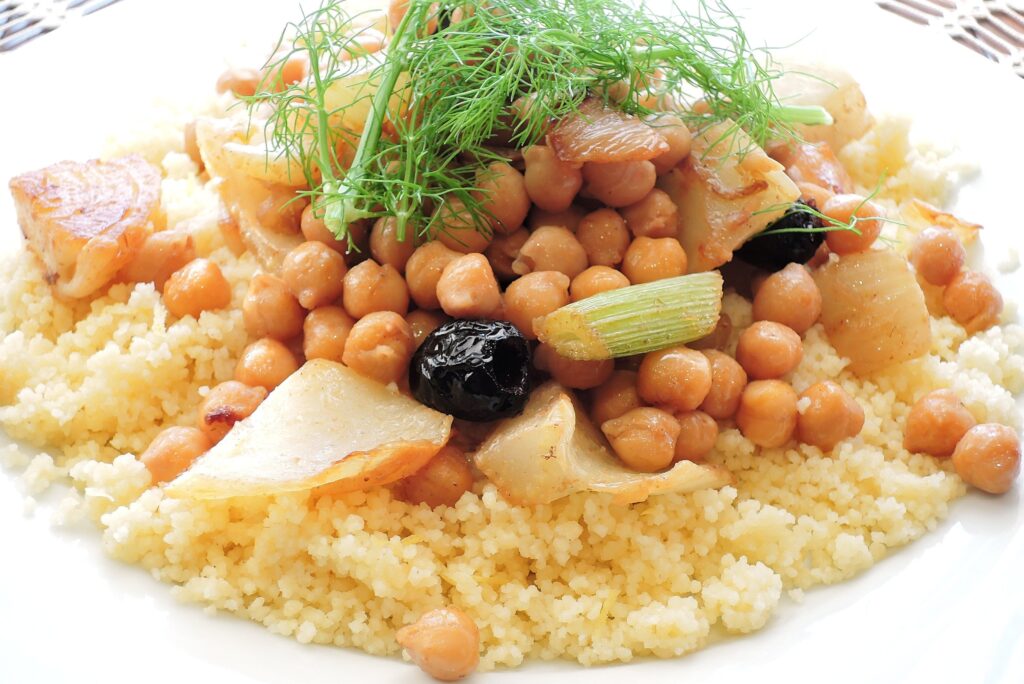
You’re about to explore one of Morocco’s most beloved dishes: Couscous with Seven Vegetables. This traditional, wholesome recipe brings together fragrant spices, fresh vegetables, and fluffy couscous grains in a dish that generations of Moroccan families have cherished. Whether you’re an experienced cook or just discovering Moroccan cuisine, this recipe is easy to prepare and perfect for sharing with family and friends.
Moroccan Couscous with Seven Vegetables
This flavorful dish tells a deeper story—it reflects Morocco’s warmth, hospitality, and cultural pride. Couscous isn’t just food; it’s a weekly ritual, a community meal, and a symbol of generosity. In this guide, you’ll learn how to prepare it and explore why it’s such an essential part of Moroccan culinary heritage.
Key Takeaways
- Learn why couscous holds deep cultural significance in Moroccan cuisine.
- Discover the essential ingredients and step-by-step preparation.
- Understand the health benefits of the seven vegetables used.
- Find simple variations to suit your taste.
- Appreciate couscous as a staple of North African tradition.
The Cultural Significance of Couscous in Morocco
Moroccan couscous with seven vegetables represents more than just a national dish—it expresses the country’s rich culinary legacy and traditional values. Families across Morocco gather every Friday to cook and enjoy couscous together, strengthening bonds and honoring heritage.
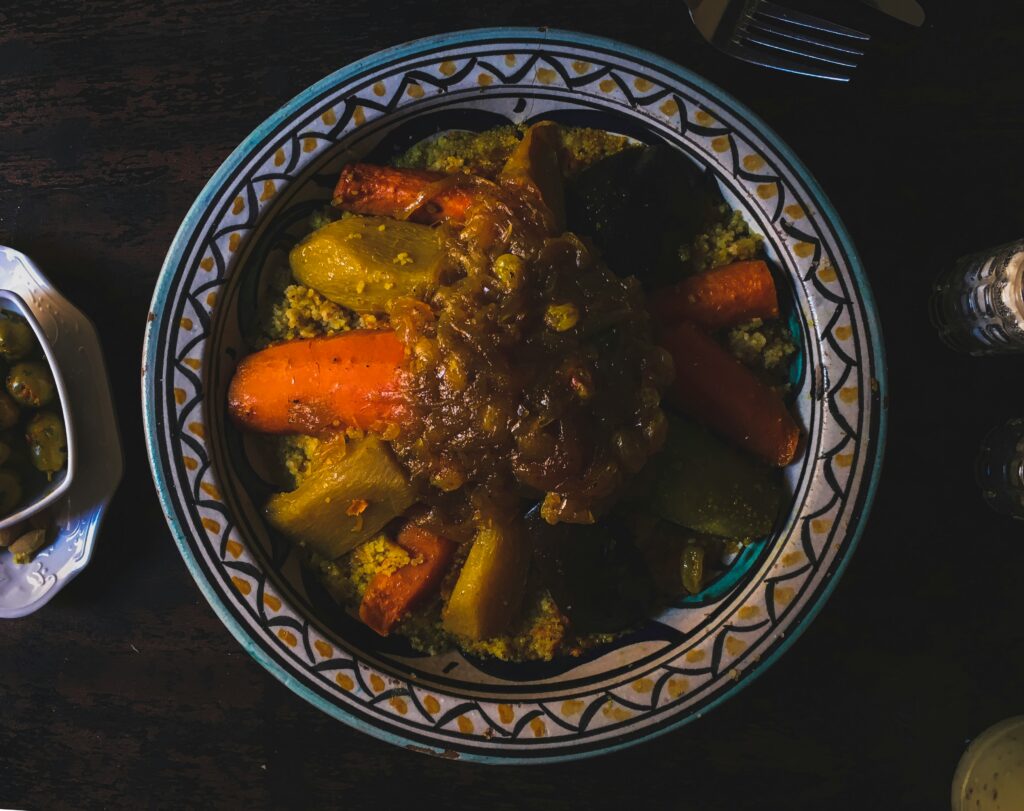
Origins and History of Couscous
Berber communities in North Africa created couscous centuries ago. Over time, Arab, Mediterranean, and African influences enriched the recipe. Today, Moroccan households proudly pass down their unique versions of couscous, preserving a deep connection to the past.
Why Seven Vegetables Matter
Moroccan cooks carefully choose seven vegetables to symbolize abundance and prosperity. The number seven holds cultural and spiritual value across many traditions, and the colorful mix reflects Morocco’s agricultural wealth and culinary variety.
Family Traditions and Celebrations
Couscous plays a significant role in Moroccan family traditions and celebrations. It is often served during special occasions such as weddings, holidays, and family gatherings. The preparation of couscous is a communal activity that brings people together, reinforcing family bonds and cultural heritage.
In conclusion, couscous is more than just a traditional recipe; it’s a cultural icon that represents the heart of Moroccan cuisine and community. Understanding its cultural significance enhances our appreciation of this beloved dish.
Understanding the Essence of Moroccan Cuisine
As you exploreZZ, you’ll discover a world of flavors shaped by the country’s history and geography. Moroccan cuisine is a rich culinary tradition that reflects the country’s cultural diversity.
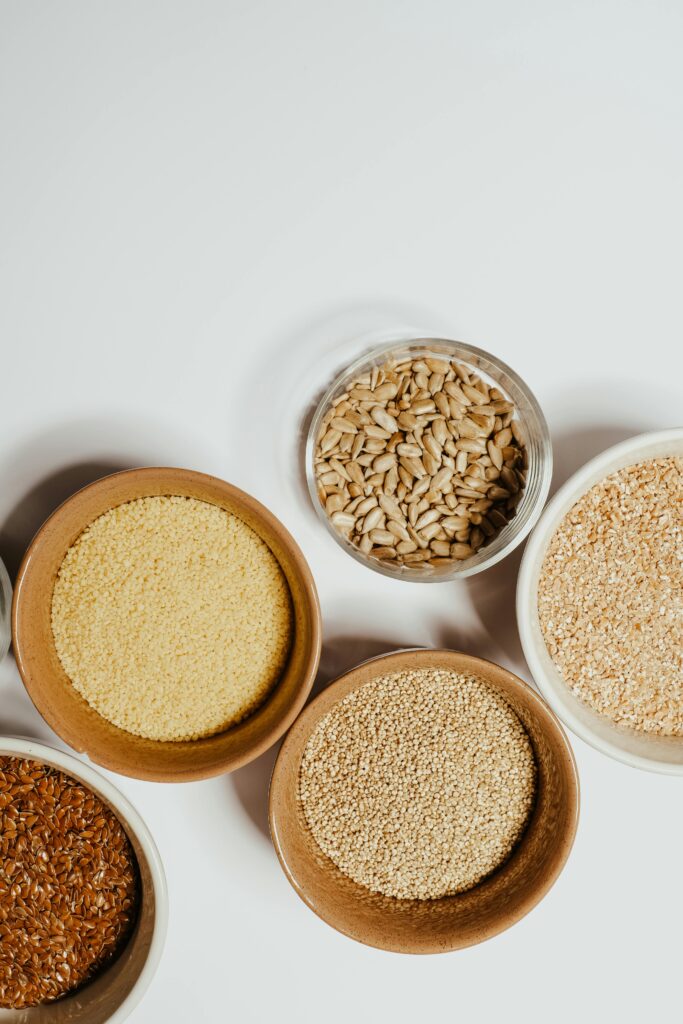
Flavor Profiles and Spice Combinations
The flavor profiles in Moroccan cuisine are complex and aromatic, often combining sweet, sour, and spicy notes. Spice combinations play a crucial role, with blends like ras el hanout adding depth to various dishes.
Regional Cooking Styles Across Morocco
Morocco’s regional cooking styles vary significantly, from the coastal influences in cities like Essaouira to the Berber traditions in the Atlas Mountains. Each region contributes its unique ingredients and cooking techniques, enriching the overall culinary landscape.
Essential Ingredients for Authentic Moroccan Couscous
The secret to an authentic Moroccan Couscous experience is in the selection of its essential ingredients. To create this traditional North African dish, you’ll need to focus on a few key components.
Selecting the Right Type of Couscous
When it comes to homemade couscous, the type of couscous you choose is crucial. Traditionally, Moroccan cuisine uses a specific type of couscous made from semolina flour. You can opt for either the fine or medium grind, depending on your preference. Fine couscous is more traditional, while medium couscous offers a slightly different texture.
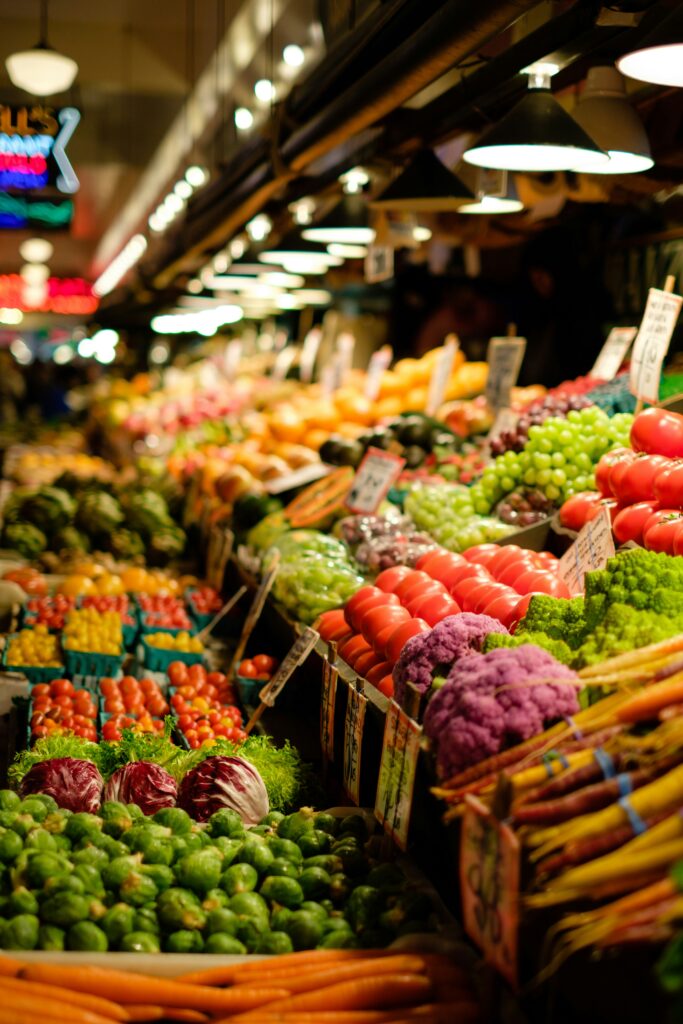
The Seven Traditional Vegetables and Their Significance
The seven traditional vegetables used in Moroccan Couscous are:
- Carrots
- Zucchini
- Potatoes
- Tomatoes
- Green peppers
- Onions
- Parsnips or turnips
These vegetables are not only chosen for their flavor but also for their symbolic significance in North African culture.
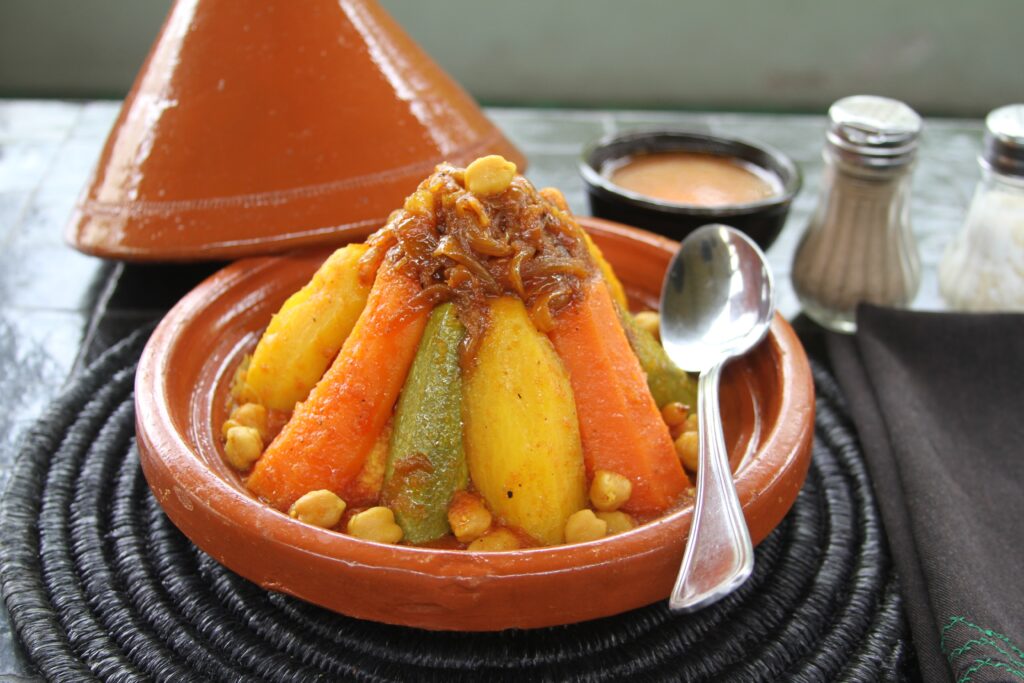
Essential Spices and Aromatics
A blend of essential spices and aromatics gives Moroccan Couscous its characteristic flavor. Key ingredients include cumin, coriander, ginger, turmeric, and cinnamon. Onions and garlic are also fundamental in creating the rich broth.
Optional Ingredients for Enhanced Flavor
To enhance the flavor of your couscous, consider adding optional ingredients such as lamb or chicken for added protein, or preserved lemons for a tangy twist. Some recipes also include chickpeas or raisins for added texture and sweetness.
Kitchen Equipment You’ll Need
The right kitchen equipment is crucial for making delicious Moroccan Couscous. To start, you’ll need a cooking vessel that can handle the steaming process, which is essential for couscous preparation.
Traditional Couscousier vs. Modern Alternatives
A traditional couscousier is a two-part pot where the bottom part is used for boiling water or broth, and the top part steams the couscous. While this is the authentic way to prepare couscous, modern alternatives such as a steamer basket or a pressure cooker can also be used effectively.
Essential Utensils and Cookware
In addition to a steaming device, you’ll need a large pot for preparing the broth, a cutting board for chopping vegetables, and a sharp knife A wooden spoon is also handy for stirring the couscous and vegetables
Setting Up Your Workspace
Before you start cooking, ensure your workspace is organized. Have all your ingredients measured out and your utensils within reach. This will make the cooking process smoother and more enjoyable.
Preparing the Vegetables for Your Couscous
The art of making Moroccan Couscous begins with the careful selection and preparation of seven traditional vegetables. Preparing the vegetables is a fundamental step that significantly impacts the overall flavor and texture of the dish.
Cleaning and Cutting Techniques
To start, you’ll need to clean and cut the vegetables according to their type. For instance, carrots and zucchini should be peeled and cut into bite-sized pieces, while tomatoes and bell peppers require removing seeds before dicing. Proper cutting techniques ensure that the vegetables cook evenly, which is crucial for achieving the perfect harmony in your couscous.
Proper Order of Preparation
The order in which you prepare the vegetables can affect the final outcome of your dish. Typically, you should start with the vegetables that take the longest to cook, such as carrots and onions, followed by those that cook more quickly, like zucchini and tomatoes. This order ensures that all the vegetables are done at the same time.
Time-Saving Preparation Tips
To make the preparation process more efficient, consider the following tips:
- Prepare all the vegetables before you start cooking to save time.
- Use a food processor to chop or slice vegetables quickly.
- Keep the vegetables organized by type to streamline the cooking process.
| Vegetable | Preparation Method | Cooking Time |
| Carrots | Peel and chop | 20-25 minutes |
| Zucchini | Dice | 10-15 minutes |
| Tomatoes | Remove seeds and dice | 5-10 minutes |
Creating the Flavorful Broth Base
A well-made broth base is the heart of Moroccan Couscous, elevating the dish to new heights. The broth is not just a accompaniment to the couscous and vegetables; it’s a rich, flavorful sauce that ties the entire dish together.
Building Layers of Flavor with Spices
To create a deep and complex broth, you need to build layers of flavor using a variety of spices. Start with the basics like onions, garlic, and ginger, then add a blend of Moroccan spices including cumin, coriander, and cinnamon. You can also add a pinch of saffron for its distinct flavor and color.
- Cumin adds warmth and earthiness
- Coriander provides a slightly sweet and citrusy note
- Cinnamon contributes a warm, spicy flavor
Simmering Techniques for Rich Taste
Simmering is key to developing a rich and flavorful broth. Allow the broth to simmer gently for at least an hour, allowing the flavors to meld together and the meat (if using) to become tender. You can also simmer the broth for longer periods, such as 2-3 hours, for an even richer flavor.
Adjusting Seasonings to Your Preference
Taste the broth regularly as it simmers and adjust the seasonings as needed. You may want to add more salt, pepper, or spices to taste. Remember, the broth should be flavorful but not overpowering, as it will be served with the couscous and vegetables.
By following these steps, you can create a flavorful broth that serves as the foundation of a healthy and delicious meal.
Step-by-Step Cooking Process
Preparing Moroccan Couscous involves several crucial steps that, when followed correctly, result in a delightful and traditional North African dish. To start, it’s essential to understand the importance of each step in the cooking process.
Preparing and Rinsing the Couscous Grains
Begin by measuring out the couscous grains. Traditionally, Moroccan Couscous is made with fine or medium-grained couscous. Rinse the couscous grains in a fine-mesh sieve under cold running water to remove any impurities or excess starch. This step helps in achieving the right texture.
Cooking Vegetables According to Density
Cooking the vegetables according to their density ensures that they are all cooked to perfection. Start with the densest vegetables, such as carrots and turnips, and gradually add the less dense ones like zucchini and tomatoes. This method prevents overcooking the softer vegetables.
| Vegetable | Density | Cooking Time |
| Carrots | High | 20 minutes |
| Zucchini | Low | 10 minutes |
Properly Steaming the Couscous Multiple Times
Steaming is a critical step in cooking couscous. The couscous needs to be steamed multiple times to achieve the perfect fluffiness. After the initial steaming, fluff the couscous with a fork and sprinkle with water before steaming again. This process is repeated to ensure the couscous is cooked evenly.
Testing for Doneness and Texture
To test if the couscous is done, take a few grains and roll them between your fingers. If they are soft and not crunchy, they are ready. The texture should be light and fluffy, not mushy or hard.
By following these steps, you’ll be able to create a delicious and authentic Moroccan Couscous dish that’s sure to impress. The key is in the details and the patience to steam the couscous multiple times.
Moroccan Couscous with Seven Vegetables: Assembly and Presentation
As you near the completion of your Moroccan Couscous with Seven Vegetables, the focus shifts to assembly and presentation, crucial elements that elevate the dining experience. The way you present your couscous can significantly impact the overall perception and enjoyment of the meal.
Traditional Serving Methods
In Morocco, couscous is traditionally served on large, communal platters. The couscous is steamed to perfection and then arranged in a mound shape. The vegetables and broth are spooned over the top, creating a visually appealing and aromatic dish.
Creating the Iconic Mound Presentation
To achieve the iconic mound presentation, start by placing a generous amount of couscous on a large serving platter or individual plates. Use a gentle pressing motion to form the couscous into a mound. Then, arrange the seven vegetables around or on top of the mound, ensuring a colorful and balanced display.
Garnishing for Visual Appeal
Garnishing is the final touch that adds a pop of color and freshness to your dish. Common garnishes include fresh parsley, lemon wedges, and a sprinkle of paprika. You can also add a few olives or preserved lemons to enhance the visual appeal and tie in with traditional Moroccan flavors.
| Garnish | Effect |
| Fresh Parsley | Adds freshness and color |
| Lemon Wedges | Provides a burst of citrus flavor |
| Paprika | Adds a smoky depth and visual appeal |
By following these steps, you can create a beautifully presented Moroccan Couscous with Seven Vegetables that is sure to impress your guests and satisfy their taste buds.
Delicious Variations and Modern Adaptations
You can easily modify the traditional Moroccan Couscous recipe to suit various tastes and dietary needs. This versatility is part of what makes Couscous so beloved around the world.
Vegetarian and Vegan Versions
For a vegetarian or vegan version, you can focus on enhancing the variety and quantity of vegetables. Consider adding roasted vegetables like sweet potatoes or carrots to add natural sweetness. Tofu or tempeh can be marinated and added to provide protein.
Adding Lamb, Chicken, or Fish
If you prefer to include meat or fish, lamb, chicken, or fish can be added to the broth for extra flavor. Grilled chicken or lamb skewers can be served on top of the Couscous for a hearty meal.
Gluten-Free and Health-Conscious Alternatives
For a gluten-free version, ensure that the Couscous is made from gluten-free ingredients like corn or rice flour. You can also reduce the amount of oil used and add more herbs and spices to enhance flavor without adding extra salt or sugar.
Fusion Approaches to the Classic Recipe
Modern adaptations can include fusion elements, such as adding Korean chili flakes (gochugaru) for a spicy kick or using Mediterranean ingredients like olives and artichoke hearts.
These variations show that Moroccan Couscous is a dish that can be creatively adapted to suit any taste or dietary requirement, making it a versatile option for any meal.
Health Benefits and Nutritional Value
With its rich blend of vegetables and whole grains, Moroccan Couscous offers numerous health benefits. This traditional North African dish is not only flavorful but also provides a balanced mix of macronutrients, including complex carbohydrates from the couscous and protein from the vegetables.
Balanced Macronutrients in the Dish
The combination of couscous and seven vegetables creates a meal that is both filling and nutritious. The couscous provides complex carbohydrates, while the vegetables add fiber and protein, making it a healthy meal option.
Vitamin and Mineral Content
The variety of vegetables used in Moroccan Couscous ensures a broad intake of vitamins and minerals. These include vitamin A from carrots, vitamin C from tomatoes, and potassium from various vegetables, contributing to overall health.
How This Dish Fits into a Healthy Diet
Incorporating Moroccan Couscous into your diet can be a great way to increase your intake of whole grains and vegetables. It’s a versatile dish that can be adapted to suit different dietary needs, making it a valuable part of a balanced diet.
Common Mistakes to Avoid When Making Couscous
To create an authentic Moroccan couscous with seven vegetables, it’s crucial to be aware of the common mistakes that can compromise its quality. Understanding these pitfalls will help you achieve a delicious and satisfying dish.
Texture Problems and Their Solutions
One of the most common issues with couscous is achieving the right texture. Overcooking or undercooking can lead to an unappealing consistency. To avoid this, ensure that you steam the couscous multiple times, fluffing it between steaming to prevent clumping.
Seasoning Errors That Affect Flavor
Seasoning is a critical aspect of making couscous. A common mistake is not balancing the spices correctly, leading to an unbalanced flavor profile. To avoid this, build layers of flavor by adding spices at different stages of cooking.
Cooking Time and Temperature Issues
Cooking time and temperature can significantly impact the final result. Ensure that you cook the vegetables according to their density and steam the couscous at the right temperature to achieve the perfect texture.
Storage and Reheating Mistakes
Proper storage and reheating techniques are essential to maintaining the quality of leftover couscous. Store it in an airtight container and reheat it gently, adding a bit of water or broth if necessary to restore its original texture.
Conclusion
You now have the knowledge and confidence to create this delicious and nutritious dish at home. By understanding the cultural significance, essential ingredients, and step-by-step cooking process, you’re ready to start cooking.
As you’ve learned, Moroccan Couscous with Seven Vegetables is more than just a meal – it’s a celebration of North African cuisine and family traditions. With practice, you’ll be able to perfect the recipe and make it your own.
So, gather your ingredients, set up your workspace, and start cooking. With each steaming and seasoning, you’ll become more comfortable with the process. Moroccan Couscous with Seven Vegetables is a dish that’s sure to impress your family and friends, and you’re now equipped to make it happen.
In conclusion, making Moroccan Couscous with Seven Vegetables is a rewarding experience that combines flavor, nutrition, and cultural heritage. You’re encouraged to experiment with variations and modern adaptations to make the dish your own.
FAQ
What is Moroccan Couscous with Seven Vegetables?
Moroccan Couscous with Seven Vegetables is a traditional North African dish made with couscous, a variety of vegetables, and a blend of spices. It’s a flavorful and nutritious meal that is often served on special occasions.
What are the seven traditional vegetables used in Moroccan Couscous?
The seven traditional vegetables used in Moroccan Couscous are typically carrots, zucchini, eggplant, green beans, cabbage, tomatoes, and onions or other root vegetables. You can adjust the vegetables according to your preference and seasonal availability.
Can I make Moroccan Couscous with Seven Vegetables vegan or vegetarian?
Yes, Moroccan Couscous with Seven Vegetables is naturally vegetarian and can be made vegan by using a vegetable broth instead of chicken or beef broth. You can also customize the recipe to suit your dietary preferences.
What type of couscous is best for Moroccan Couscous with Seven Vegetables?
The best type of couscous for Moroccan Couscous with Seven Vegetables is traditional Moroccan couscous, which is made from semolina flour. You can also use instant couscous or other types of couscous, but the traditional type is preferred for its texture and flavor.
How do I achieve the perfect texture for my couscous?
To achieve the perfect texture for your couscous, make sure to steam it multiple times, fluffing it with a fork between steaming. You should also use the right ratio of water to couscous and avoid overcooking.
Can I make Moroccan Couscous with Seven Vegetables ahead of time?
Yes, you can make Moroccan Couscous with Seven Vegetables ahead of time. You can prepare the vegetables and broth a day in advance, and then assemble and steam the couscous just before serving.
How do I store and reheat leftover Moroccan Couscous with Seven Vegetables?
To store leftover Moroccan Couscous with Seven Vegetables, let it cool completely, then refrigerate or freeze it. To reheat, steam the couscous again or microwave it with a little water. You can also reheat the broth and vegetables separately.


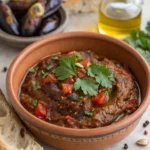
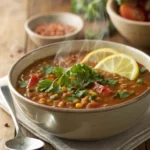
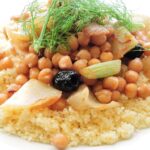
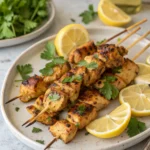
[…] yet 62% of home cooks outside the region have never attempted making it from scratch? The authentic Moroccan Vegetable Couscous is more than just an ordinary dish—it’s a vibrant celebration of flavors that has been […]